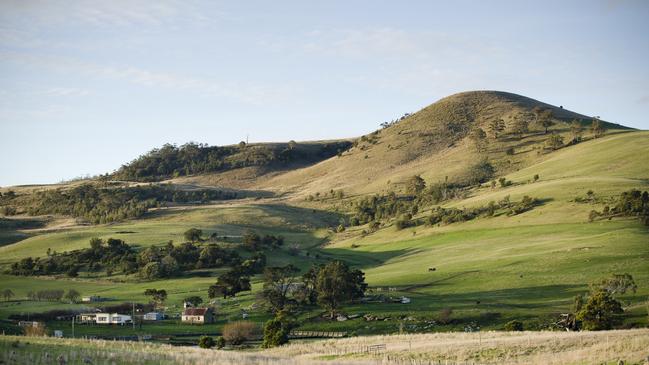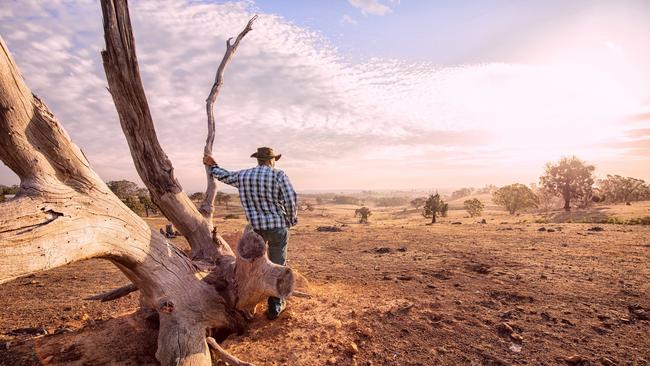
Frontier Economics’ horrendous $660bn estimated 25-year cost of the current state and federal governments’ power generation plan is forcing the nation to reconsider its whole emission strategy.
Today, I want to advance a new and profitable way of cutting emissions. And I am aided by Robert F. Kennedy Jr. in the US and the past work of the CSIRO when it concentrated on science rather than politics.

Unless the current $660bn plan is drastically changed, vast areas of Australian industry and employment will be uneconomic, slashing our living standards, including social welfare.
The nation is now being to forced discuss more gas; to recognise the enormous power costs required to economically justify offshore wind farms in Victoria and NSW; the siting of renewable facilities in remote farm areas creating huge transmission costs and, of course, the addition of nuclear to our options.
To those options, I add the expansion of so called “regenerative farming”, which is a different approach to agriculture which can add a new dimension to reducing carbon emissions. There are few countries in the world with Australia’s potential to reduce emissions this way.
Better still, by working with Kennedy Jr., we may be able to repair some of the battered relationships we have with the Trump administration as a result of our foolish behaviour in the Middle East.
Kennedy’s policy to “Make America Healthy Again” by stripping additives out of processed food products boosted white female support for Trump and was crucial in his victory in key states. But Kennedy also wants to transform American farming. He describes his plan this way:
“America’s current agriculture policy destroys the health of American soil and water by tilting the playing field in favour of more chemicals, more herbicide, more insecticides, more concentrated monocrops and feed lots.
“The chemicals pollute our bodies the same way that they pollute the soil.
“I have seen some of what America’s most innovative regenerative farmers are doing today. They can literally green deserts and they rebuild depleted soils. Wells that have been dry for 30 years are now flowing. American agriculture will come roaring back.”

Australia will require different regenerative farming techniques to the US, but the common denominator is year-round to maximise the plant coverage of the land, which increases the amount of photosynthesis.
Regenerative farming also avoids bare soils that erode, avoids deep ploughing, stubble burning, overgrazing plus excessive use of chemicals and pesticides that destroy the carbon content of the soils
As in America, Australian regenerative farmers often face a hard time as they battle regulators, but they have had remarkable success.
In Australia, we can add an extra dimension to regenerative farming – growing plants with root systems that can store carbon. The most obvious plant is the saltbush which can also be harvested for protein.
At the start of the 21st century, the now retired head of the CSIRO energy division David Brockway mapped a new saltbush future for the nation. That vision is even more urgent now, given our current emission reduction schemes are uneconomic.
“Because we are releasing that sequestered carbon back into the atmosphere with dangerous climate consequences, the resumption of drawing down atmospheric carbon dioxide is essential even if we reach zero emissions by 2050,” Brockway said.
Although other plant species need to be used, to implement the CSIRO strategy saltbush looks to be the cheapest and easiest way to extract carbon from the air and store it underground via the saltbush massive root systems.
In addition, the world is becoming short of protein and so saltbush plants can be harvested as an export crop or used for cattle and other farm animals in Australia.
Brockway elaborates this way: “By the substantial planting of deep-root species, deep into the soil where the carbon is stored, we can substantially draw down atmospheric carbon dioxide concentrations over several decades.
“Deep-root species have a particular advantage in that significant amounts of carbon can be stored under conditions whereby the longevity of the carbon stored in the soil lasts for millennia, possibly for millions of years.
“For all intents and purposes – and certainly over the time frame required before renewables can become adopted universally – carbon stored in deep-root systems can be used to almost permanently remove carbon dioxide from the atmosphere.
“And it can be achieved in a very cost-effective manner.
“Australia has the unique opportunity to make a significant contribution to drawing down atmospheric carbon dioxide using its vast areas of marginal land with deep-root species suited to its marginal and under-productive nature.”

The Australian government-funded Agri Futures group says that saltbush can be grown in more than 60 per cent of the Australian mainland, covering most of Western Australia, Northern Territory, South Australia and in parts of NSW and Victoria.
Saltbush can be grown in arid, low rainfall areas, although its salt content means that it must be combined with other plants when harvested as a source of protein.
The biggest single protein market is China, which has some 400 million pigs and imports soya beans as a source of protein.
Massive saltbush planting and carbon absorption will enable an orderly rundown of carbon-based fuels, while the carbon storage will create carbon credits with a high global market value.
The potential rewards for Australia over the next decade or two are massive, but we need to do more carbon verification work to take any controversy out of the storage process.
And finally, a suggestion for Qantas and/or Virgin/Qatar. One of Australia’s great long term challenges is that the emissions involved in the long aviation journeys will discourage many affluent tourists from coming to Australia.
Qantas and Virgin can support large areas of regenerative farming and saltbush planting, which can neutralise emissions either at a profit or very low cost. Qantas can call it Project Longreach.




